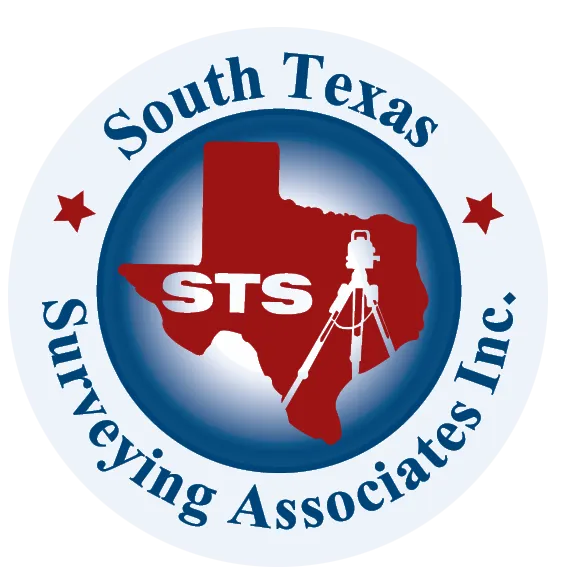Surveying Texas Since 1980 Family Owned, Customer Devoted | Firm #10045400 | 281-556-6918
See Our Latest Blogs

What’s in a Land Survey? A Guide for Texas Property Owners
"Texas, often referred to as the Lone Star State, is a thriving hub for economic growth and innovation, making it an attractive destination for commercial real estate investment." - Chris Evans
What’s Included in a Land Survey—and How to Read It
Got a Land Survey in Hand? Here’s What You’re Looking At
Whether you're buying property, planning an improvement, or finalizing a commercial deal, you'll likely receive a land survey as part of the process. But for many property owners, reading a survey document feels like decoding blueprints from another planet.
At South Texas Surveying, we not only deliver highly accurate surveys—we help clients understand what they mean. Let’s break down what’s included, why it matters, and how to read one confidently.
What’s Actually Included in a Professional Land Survey?
A standard boundary or improvement survey typically includes:
📐 Property boundary lines
📏 Lot dimensions and angles
📄 Legal description of the parcel
🏠 Locations of buildings, fences, driveways, or structures
🛤️ Easements, setbacks, and right-of-way locations
🧭 North arrow and scale
🗺️ Neighboring lot info, street names, and parcel ID numbers
✍️ Surveyor’s seal, date, and certification statement
📎 Depending on the survey type (boundary, ALTA, topographic), it may also include elevation data, zoning notations, floodplain lines, or utility infrastructure.
How to Read a Land Survey: Key Elements Explained
🧭 The North Arrow
Shows map orientation—always find this first.
📏 Scale
Tells you the ratio (e.g., 1 inch = 20 feet) so you know how distances translate to real-world space.
📐 Bearings and Distances
These are the angle and length of each property line, usually shown in degrees, minutes, and seconds (e.g., N 35°45'30" E 100.00').
🧱 Improvements
Structures like homes, garages, fences, and sheds are often outlined with dimensions and distances from lot lines.
🧾 Easements and Setbacks
Indicated with dashed lines or labels; these are areas where you can't build or encroach.
🌊 Floodplain Designations (if applicable)
Look for shaded or labeled areas—essential for buyers in flood-prone areas like parts of Galveston, Liberty, or Brazoria County.
Why This Information Matters
✅ For buyers: Know exactly what you’re buying
✅ For sellers: Avoid delays from boundary issues
✅ For homeowners: Plan additions, fences, or improvements safely
✅ For real estate pros: Catch red flags before closing
✅ For builders: Ensure structures meet legal and zoning standards
Common Mistakes When Reading Surveys
❌ Assuming a fence line = the property line (often it doesn't)
❌ Overlooking easements that block pool or garage placement
❌ Ignoring setback violations on older buildings
❌ Not realizing a portion of the land sits in a flood zone
❌ Using outdated surveys with expired certifications
📎 Always verify that your survey is recent and stamped by a licensed Texas surveyor.
Where Reading Your Survey Really Pays Off in the Houston Area
Montgomery County: Elevation lines affect drainage and construction
East Houston & Baytown: Industrial encroachments and utility easements are common
Tomball & Cypress: Lot line shifts between newer and older developments
The Heights & Midtown: Narrow lots and tight setbacks make accuracy critical
Liberty & Waller Counties: Large rural tracts often lack updated legal descriptions
Why Clients Trust South Texas Surveying
✔️ Clear, detailed surveys tailored for buyers, sellers, investors, and builders
✔️ Explanations included—because understanding matters
✔️ Friendly team available to walk you through the document
✔️ Trusted across Harris, Fort Bend, Montgomery, Brazoria, Liberty, Galveston, and Waller counties
📞 Need a survey you can read and rely on? South Texas Surveying is here to help.
A Land Survey Is More Than a Map—It’s Your Legal Blueprint
Whether you’re closing on a home, preparing to build, or clearing up an old title issue, your survey is a vital legal document. And like any contract or deed, it pays to understand what’s inside.
📍 Contact South Texas Surveying for clear, certified, and easy-to-read land surveys in Greater Houston and beyond.
Delivering Land Surveys with Attention to Detail
George Owens
Commercial Broker

I have worked with many surveying companies, but South Texas Surveying stands out for their exceptional professionalism, attention to detail, and commitment to their clients.
Kim Wexler
Project Manager

Their accurate and thorough surveys make my job a lot easier, their ability to communicate effectively with all parties involved is commendable. I highly recommend South Texas Surveying.
James Cart
Homeowner

As a new homeowner, I was thoroughly impressed with the professional service provided by South Texas Surveying. I high recommend their services to any one buying a home in Houston.
Contact Us
Email: [email protected]
Office Address: 11281 Richmond Ave
BLDG J, Suite 101,
Houston, TX 77082
Office Hours: Mon – Fri 8:00am – 5:00pm
Office Phone Number: 281-556-6918
11281 Richmond Ave
BLDG J, Suite 101,
Houston, TX 77082
Firm Number: 10045400
Resources
© Copyright 2024 South Texas Surveying Associates
